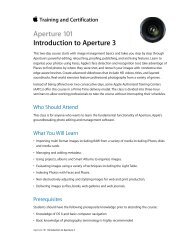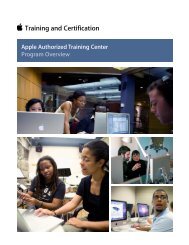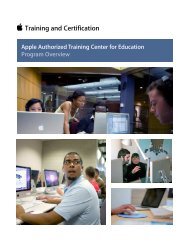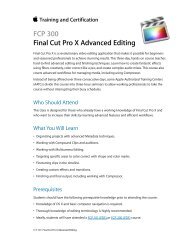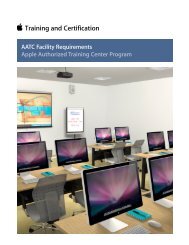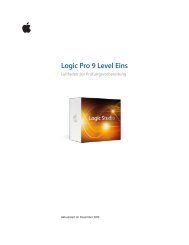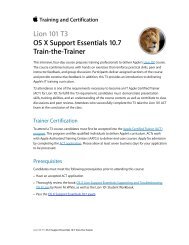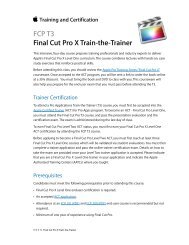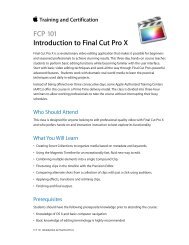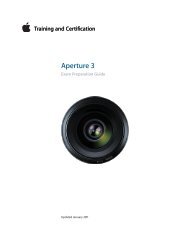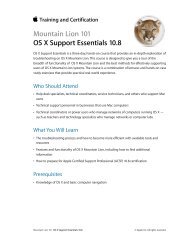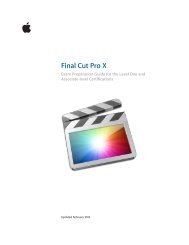OS X Support Essentials 10.8 - Training - Apple
OS X Support Essentials 10.8 - Training - Apple
OS X Support Essentials 10.8 - Training - Apple
Create successful ePaper yourself
Turn your PDF publications into a flip-book with our unique Google optimized e-Paper software.
<strong>OS</strong> X <strong>Support</strong> <strong>Essentials</strong> <strong>10.8</strong> Exam Preparation Guide<br />
7. How can you ensure that previously deleted items are<br />
securely erased?<br />
8. How can you encrypt a disk without erasing its contents?<br />
9. What four methods can be used to eject a volume or disk<br />
from the Finder?<br />
10. What is the potential side effect of improperly unmounting or<br />
ejecting a disk or volume?<br />
Answers<br />
1. Disks are the actual storage hardware; partitions are logical<br />
divisions of a disk used to define the storage space; and<br />
volumes, contained inside partitions, are used to define how<br />
the individual files and folders are saved to the storage.<br />
2. GUID Partition Table is the default partition scheme on Intelbased<br />
Mac computers, and <strong>Apple</strong> Partition Map is the default<br />
partition scheme on PowerPC-based Mac computers.<br />
3. The two volume formats supported as system volumes for<br />
<strong>OS</strong> X are Mac <strong>OS</strong> Extended (Journaled) and Mac <strong>OS</strong> Extended<br />
(Journaled, Encrypted).<br />
4. File system journaling records what file operations are in<br />
progress at any given moment. This way, if a power failure or<br />
system crash occurs, the system can quickly verify the<br />
integrity of the volume by “replaying” the journal after restart.<br />
5. The four erase options in Disk Utility are:<br />
• Fastest, which simply replaces the volume’s directory<br />
structure<br />
• A second choice, which provides good security by writing<br />
zeros on top of all the previous disk data<br />
• A third choice, which provides even better security by<br />
writing three separate passes of information on top of the<br />
previous disk data<br />
• Most Secure, which provides the best security by writing<br />
seven separate passes of information on top of the<br />
previous disk data<br />
6. Secure Empty Trash performs a 7-pass erase on the contents<br />
of the Trash folder.<br />
7. From the Erase tab in Disk Utility, you can choose to securely<br />
erase the free space of a disk or volume. This securely erases<br />
any previously deleted files on the selected disk or volume.<br />
8. From the Finder, you can encrypt a disk without erasing its<br />
contents by right-clicking or Control-clicking the disk and<br />
then choosing Encrypt from the shortcut menu.<br />
9. The four methods used to eject a volume or disk from the<br />
Finder are:<br />
18



